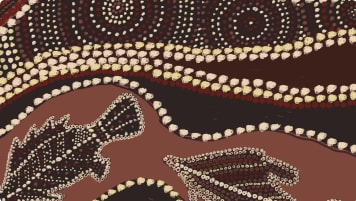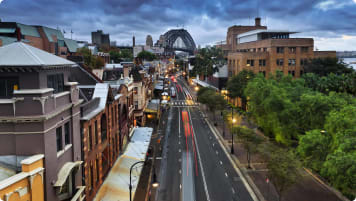Ancient Aboriginal Marketplaces
Article about Aboriginal history and trading routes and marketplaces in outback Australia. Supporting small group tours for senior and mature couples and solo travellers.
8 Jun 21 · 10 mins read

Ancient Aboriginal Marketplaces
By Marco Stojanovik
Trade was a central part of life in Aboriginal Australia prior to British settlement, with trading routes criss-crossing the breadth of the continent, flowing from one nation to the next. Isabel McBryde (1987: 267) explains that lying at the intersections of various routes on mutual soil were exchange centres, which may justly be called ‘marketplaces’: “[These] were crucial in the ebb and flow of exchange transactions that transmitted knowledge, materials, and artefacts between local and regional communities otherwise isolated by vast distances.”
The marketplaces were important as goods and intellectual property that were absent in various regions could be purchased and taken back to be introduced into daily lives (Kerwin 2010: 103). The items traded over Australia were extensive, including but not limited to various types of ochres, ornaments, hair-belts, pearl and baler shells, stone implements, shields, weapons, animal traps, wild tobacco, food and medical resources, and intellectual property such as stories, song, and dance.
Large numbers of people would gather at the marketplaces, marked by large corroborees to initiate the trading. Great centres existed at places such as Koppermana, Goyder’s Lagoon, Birdsville, Bedourie, Boulia, and Toko, but there were also smaller local equivalent exchange markets. This created a complex web of connection, in which great exchange networks were intermeshed with local ones (McBryde 1987: 268).

This article explores some of the key trading centres based around two of the most valuable items of exchange in precolonial Australia, pituri and ochre, as well as the trade of intellectual property at these marketplaces. Much of the information used is drawn from Dale Kerwin’s Aboriginal Dreaming Paths and Trading Routes, as well as journal and web articles linked to throughout the article.
This is intended as practical knowledge for a number of Odyssey Traveller small group tours in Australia, part of a continuing series of pieces on Aboriginal art, culture, trade, and settlement. An appreciation of Indigenous activity is recognised as an important facet of learning in our tours for mature and senior travellers, a part of our commitment to understanding and sharing our knowledge of the history, culture, and landscapes of Australia.
Pituri Marketplaces
Pituri is a psychoactive plant substance made from the leaves of the shrub Duboisia hopwoodii, the most potent of Australian plants containing nicotine. Widely harvested, prepared, traded and chewed by Indigenous people across much of Australia, it has been described as the ‘gold standard’ of Indigenous trading (Brady & Long, 2003).
A highly popular commodity, pituri was traditionally used in Australian Aboriginal society on long journeys as an appetite suppressant, to sharpen the senses during important meetings, and as a painkiller in higher doses.
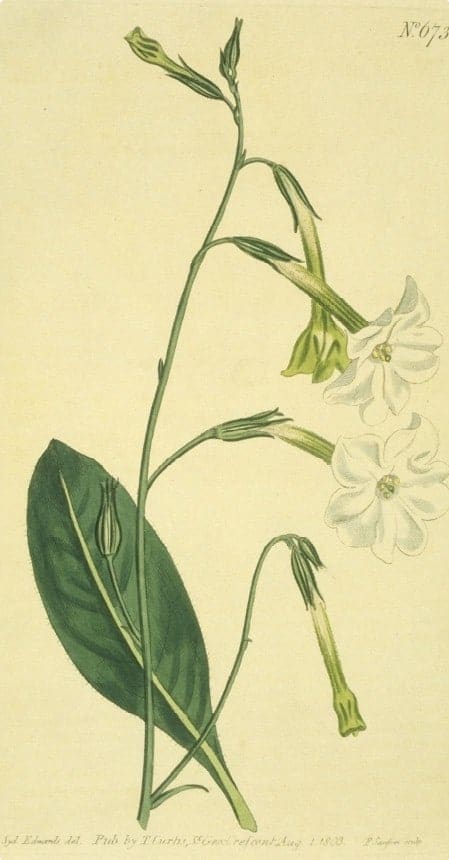
Although Duboisia hopwoodii grows naturally in large parts of the desert areas of southern and western Australia, the most sought-after pituri was prepared in south-western Queensland. It is considered likely that the leaves from the plants growing in this region were favoured because they contained nicotine in a less immediately toxic form.
From here, pituri was cured, packaged, and then distributed by foot over a region of 500,000 square kilometres. Through hot and dry desert country it was passed along Aboriginal trading routes running south to Lake Eyre, north to Cloncurry and West into the Northern Territory.
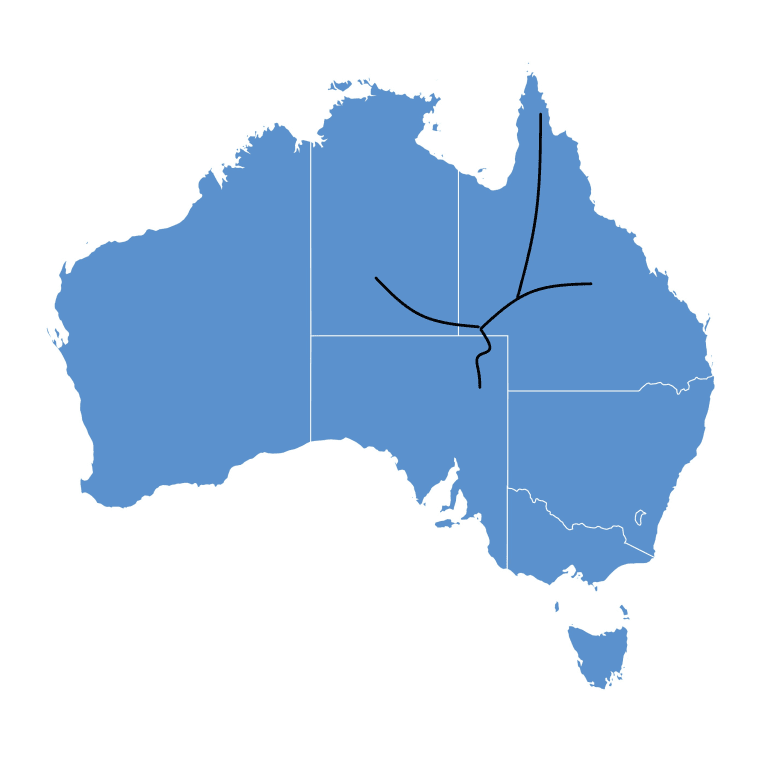
The Australian ethnographer and outback pioneer George Aiston proved an account of pituri district in 1937, focusing on the centres where it was traded (see anthropologist Pamela Watson’s blog). He noted the sighting of a centre at Koppermana in South Australia, “although the pituri had probably changed hands several times before it got there” (Aiston 1937: 373).
Koppermana consists of two Dieri Aboriginal words: ‘kapara’, meaning hand, and ‘mara’, meaning root (Kerwin 2010: 105). It has been described as ‘one old trade centre’, with the roads leading to it the mara, the root (Howitt 1882). Parties arrived here through the months of cool weather and the market was kept open all this time. Pituri was traded for stone and ochre, the trade continuing until everyone was satisfied and left for home.
Pituri came to Koppermana and other destinations from further trading centres northwards. Anne McConnell noted its movement from trade centres located at Boulia, Bedourie, Birdsville, the lower Diamentina, Goyders Lagoon and Mungerani before reaching Kopermanna, where it was distributed in many directions (McConnell 1976: 18).
The anthropologist and medicinal practitioner Walter Roth (1894), stationed in north-west Queensland at the turn of the twentieth century, attended what he described as a ‘swapping ground’ at Boulia. In addition to pituri, he also witnessed the trade in opossum-hair, eagle-hawk feather ornaments, mother-of-pearl, and curiously barbed spears, which were only made a by a tribe in the Northern Territory over 1,000 km away.
The trading places are confirmed by Aiston’s (1937: 373) sightings “at Annandale, on the Herbert”, i.e., the Georgina-Mulligan river system. “Crowds would be waiting… for the collectors [of pituri] to come in, and getting as much as they could, would make off to Birdsville, Bedourie, Urangangie, and down the Herbert.”
Others at Annandale would be waiting to take pituri and other goods down the Diamantina to a main centre at Goyder’s Lagoon, where others in turn would also be waiting to then take it back east and west as far away as the Darling and, in good seasons, the lower Finke. Aiston (1937: 374) reported to have seen “over 500 Aborigines waiting at Goyder’s Lagoon”.
Aiston also witnessed a trading centre at Birdsville, where people would come in “from the overland telegraph line, Innamincka, Arrabury, Durham and some from near Broken Hill” to purchase “big lots” of pituri (Aiston 1937: 376).

The Toko Ranges have also been identified as “once a major distribution point for pituri where it would be traded for goods such as dugong tusks from the Gulf of Carpentaria” (Letnic 2000: 113). The nations around the Toko ranges themselves sourced the pituri from a marketplace at Gordons Creek, using the Aboriginal road along the Georgina River via Glenormiston.
Roth (1894) described several further trade markets at Lake Nash, Austral Downs, and Camooweal in the east of the Northern Territory. At these locations, along with pituri traded were “pearl shell, eagle-hawk feathers, stone-knives, large coolamons, human-hair belts, spears, hook and simple boomerangs, European knives, blankets, shirts, trousers, small coolamons and emu feathers (1983: 8). From here items moved southwards to Alice Springs, and even further along with the movement of water to Lake Eyre.
Ochre Marketplaces
The natural clay ochre was one of the most important and valuable trading items for Australian Aboriginal people. An iron oxide pigment, it is found in a range of colours, ranging from white, through yellow to red and brown.
Ochre miners would crush the soft ochre rock into a powder and then mix it into a paste, usually with water, but sometimes saliva or the fat or blood of fish, emu, possum or goanna (Flood 1983: 272). The paste was then utilised for a variety of artistic and decorative purposes, including to adorn the body during corroborees and spiritual ceremonies, decorate wooden and stone implements, in rock art, and even as medicine (Paterson & Lampert 1985: 1).

Ochre deposits are common throughout the continent, but the most highly valued in Aboriginal mythology came from only a few ochre sites connected to the final resting place of a significant totem or ancestral being (Kerwin 2010: 101; Patterson & Lampert 1985: 1).
These were differentiated by the colour of the ochre, each holding a geographical and spiritual significance. The white ochre from the Lachlan River, for example, was kept by the giant kangaroos of the creation period, Wirroowaa; and yellow ochre was traded from the Yirritja moiety group of north-eastern Arnhem Land.
The most valuable pigment in ancient Aboriginal Australia though was red ochre, with pieces from deposits created by ancestral spirits essential for use in rituals amongst tribal groups across the continent (Flood 1983: 272). As such, long expeditions were commonly made to these sites, functioning as trade centres. These quests have been likened to pilgrimage-like expeditions to the resting place of a totemic ancestor.
The Yarrakina red ochre mine at Parachilna in the northern Flinders Ranges is the most notable example, attracting traders from over a wide region of central Australia for its spiritual significance. Here, the red ochre is said to be the blood of a sacred emu, which was killed by Marindi (Mindari) the dog (Horne & Aiston 1924: 128-30; Kerwin 2010: 101-2). Although plenty of ochre could be obtained at deposits hundreds of kilometres nearer to various Aboriginal groups, this was considered the proper ochre, treasured for ceremonial purposes, believed to cure, protect and strengthen.
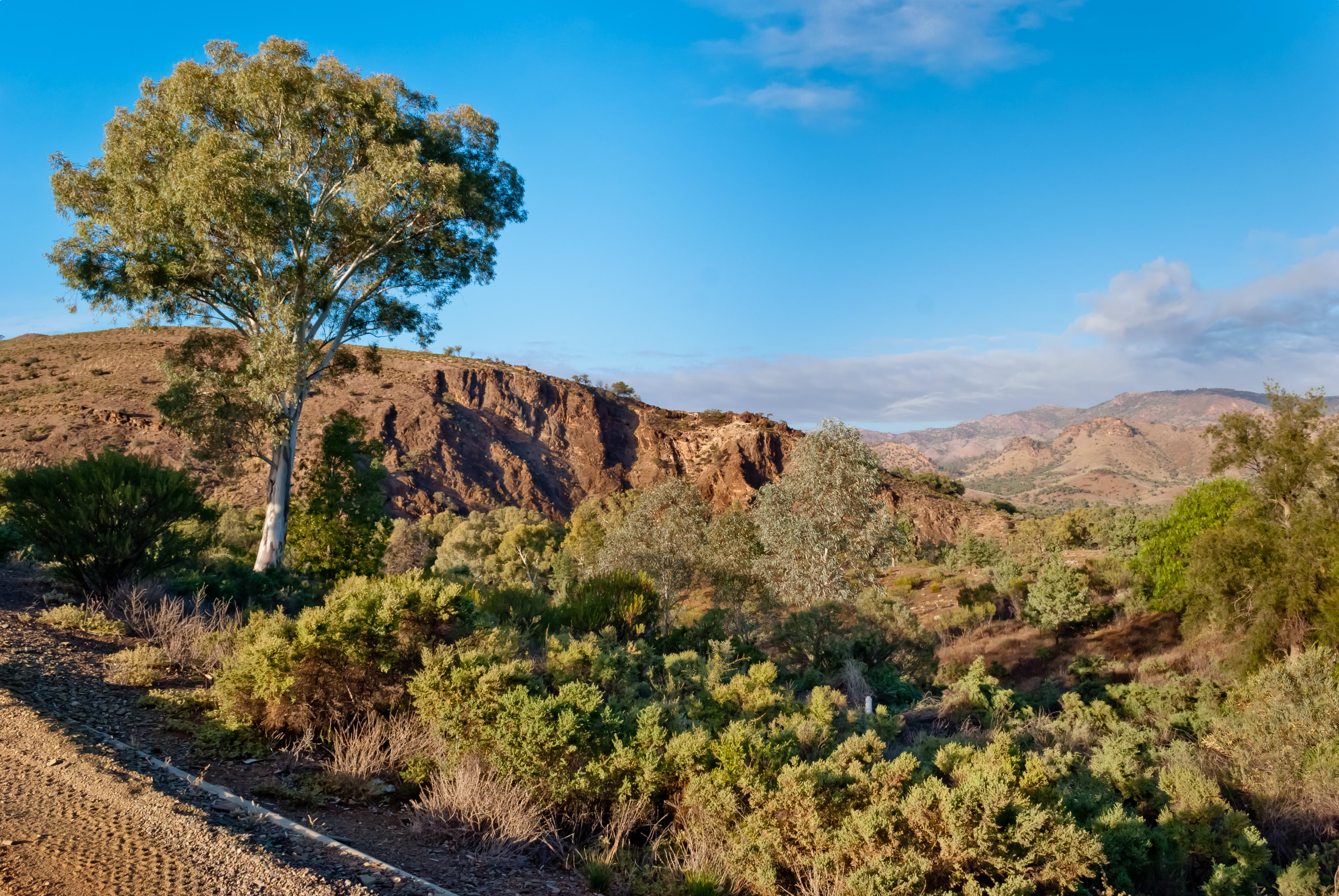
The Dieri speakers, who lived 500 kilometres to the north of Yarrakina, for example, regularly sent 70-80 men (with reports of even up to 300 at certain times) through hostile territory in order to barter with the traditional owners for the eagerly sought-after ochre (Paterson & Lampert 1985: 1). They then used the ochre not only for their own ritual purposes, but also as middle men traded with people further to the north for pituri at the aforementioned trade centre of Koppermanna, where it would be distributed northwards to the same markets as pituri.
Further expeditions were made to the Yarrakina mine to obtain the sacred ochre all the way from western Queensland, the Simpson Desert, New South Wales, and the Northern Territory. The journeys were conducted following an intricate network of Songlines and river systems. Aboriginal groups travelling south from Cloncurry and the Gulf of Carpentaria, for example, exchanged baler shells, stone axes, shields, and pituri for the ochre, while other groups from NSW exchanged light spear shafts. Boomerangs, flints, down feathers used in ceremonies, and some bush foods were also commonly exchanged.
For Aboriginals in the west, the Wilgie Mia ochre deposit, located in the Murchison region of Western Australia, was considered “a place of fabulous wealth” (Flood 1983: 272-3). In the local Wajarri people’s tradition, the ochre is said to have been formed by the death of a great kangaroo, speared by the Spirit Being called Mondong. In an agonizing leap, the kangaroo landed at what is now Wilgie Mia, spilling the red ochre his blood, the yellow his river, and green his gall. In his final leap the kangaroo landed at another hill, called Little Wilgie, which marks his grave.
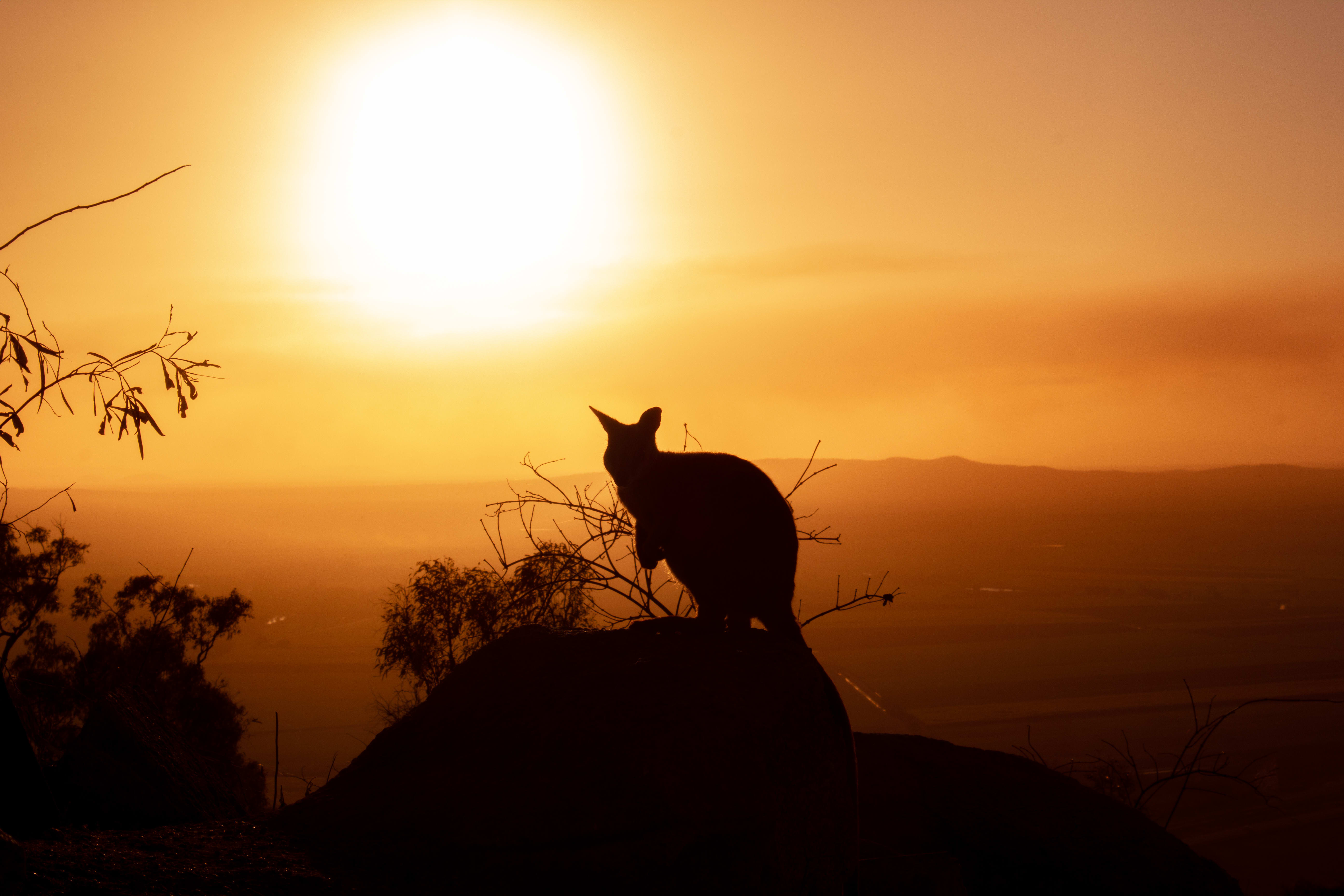
The intensely deep red coloured ochre was particularly sought after over a huge area of Western Australia. Anecdotal evidence suggests that Noongar people from as far away as King George Sound and Experience, for example, travelled to Wilgie Mia to obtain this precious substance.
Corroborees & the Trading of Intellectual Property
The trade centres hosted large gatherings of various Aboriginal groups, acting as sites of corroborees (Kerwin 2010: 104). These corroborees could have involved hundreds of people and lasted for days. Rituals were performed, disputes settled, and marriages arranged, while at night the participants shared stories through dance and song.
An emphasis was particularly placed on education, corroborees used as a medium to present information and new technology. In this way, intellectual property was also traded at marketplaces, enriching the knowledge of those who participated (Kerwin 2010: 104-105). In addition to pituri, ochre, and other material items, people traded technology, stories, songs, and dance.
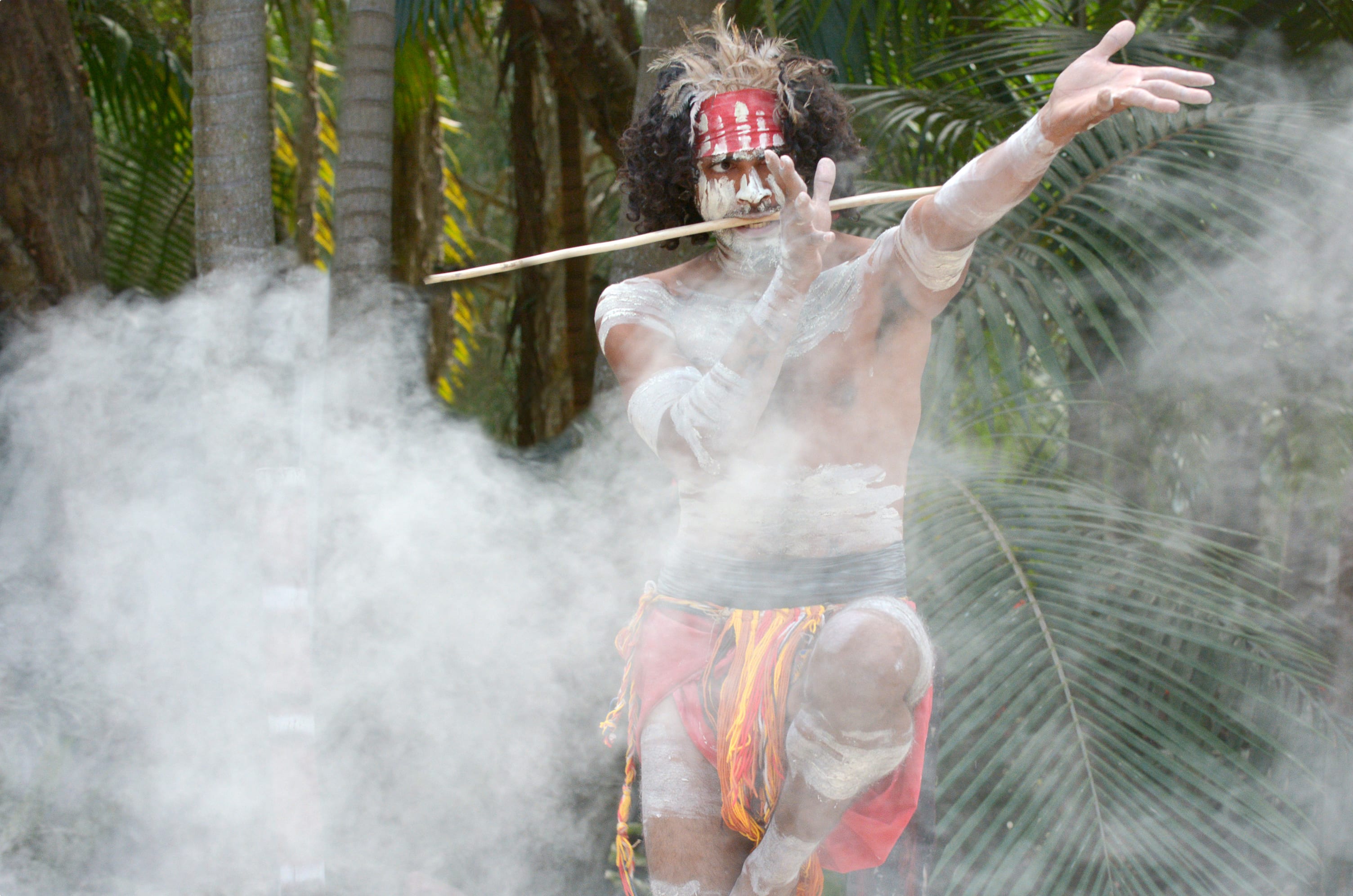
Roth observed that at the marketplaces “ideas are interchanged, superstition and tradition are handed from district to district, new words and terms are picked up, and corroborees are learnt and exchanged” (Roth 1894: 8).
Kerwin (2010: 104) explains: “Lines on a body, body ornaments, and colour of paint, they setting they are performed in, are all informative. Corroborees are used to convert tangible knowledge to a tangible form.”
The corroboree ceremonies themselves could be traded. McCarthy (1939) traced the movement of the Molonga corroboree, for example, to discover that it originated at the Diamantia River and Cooper Creek in South Australia. From here, it travelled across to Western Australia before returning to Central Australia. Roth also described the Molonga corroborree in Queensland in 1897, and Walter Spencer and Francis Gillen observed it performed by the Arrernte people of Mparntwe (Alice Springs) and surrounding area in 1904. It was also exchanged from north-west Queensland to the Great Australian Bight between 1893 and 1918, a distance of over 1,700km (Isaacs 1980: 91-94).
Tour of Aboriginal Australia
In our international tours, Odyssey Traveller has drawn upon ancient trading, exploration, and pilgrimage routes as a point of entry to understand our location, whether that’s tracing medieval European pilgrimage routes such as the Camino and the Via de la Plata in Spain; or following the ancient Silk Road through China and Uzbekistan. Now, we have drawn from ancient Aboriginal trading routes to build our Australia tours, enabling us to understand the history and significance of the landscape that surrounds us.
These include visits to:
- Archaeological sites including the Madjedbebe rockshelter and the extensive collection of ancient Aboriginal rock art at Kakadu National Park as part of our tour of Kakadu and Darwin
- The ancient indigenous sites including Lake Mungo and the Budj Bim Cultural Landscape as part of our tour of the Southern States of Australia;
- The important cultural site of Wilpena Pound on our tour of the Flinders Ranges;
- The ancient rock art in the Kimberley, Western Australia;
- The Brewarrina Fish Traps in outback Queensland;
- Uluru and Kata Tjuta in the Northern Territory.

Every Odyssey guided tour is designed especially for mature and senior travellers, who want an authentic and informed experience of their destinations. Our tours aren’t the typical tourism Australia holiday – Blue Mountains, the Great Barrier Reef, and the penguin parade on Port Phillip Island. Instead, we pride ourselves on getting of the beaten path and making you think about Australia and New Zealand in new ways. We move in genuinely small groups – usually 6-12 per tour – and all tours are cost-inclusive, encompassing accommodation, attraction entries, and transport. For more information, click here, and head to this page to make a booking.
Articles about Australia published by Odyssey Traveller:
- The Kimberley: A Definitive Guide
- Uncovering the Ancient History of Aboriginal Australia
- Aboriginal Land Use in the Mallee
- Understanding Aboriginal Aquaculture
- Mallee and Mulga: Two Iconic and Typically Inland Australian Plant Communities (By Dr. Sandy Scott).
- The Australian Outback: A Definitive Guide
- The Eyre Peninsula: Australia’s Ocean Frontier
- Archaeological mysteries of Australia: How did a 12th century African coin reach Arnhem Land?
For all the articles Odyssey Traveller has published for mature aged and senior travellers, click through on this link.
External articles to assist you on your visit to Australia:
- John Mulvaney: ‘… these Aboriginal lines of travel‘
- Queensland Historical Atlas: Aboriginal dreaming paths and trading ways
- National Museum Australia: Trade with the Makasar
- Fish traps and stone houses: New archaeological insights into Gunditjmara use of the Budj Bim lava flow of southwest Victoria over the past 7000 years
- Isabel McBryde: Exchange in south eastern Australia
- Shells, not pearls, were the real prize in traditional Aboriginal culture
- Aboriginal Trade in Ancient Australia
Related Tours

days
Jun, Jul, Sep, Feb, Mar +1Darwin and Kakadu small group tour
Visiting Northern Territory
Explore and learn as part of a small group tour for seniors on this package tour to Darwin and Kakadu National park, a UNESCO world heritage site. This program also visits Arnhem land. Our focus is on ecology, landscapes and history on this 14 day program in the far north of the Northern Territory.

days
Mar, May, Aug, Sep, Oct +2Small group tour of World Heritage sites and more in the Southern States of Australia
Visiting New South Wales, South Australia
Discover the World Heritage Sites of the southern states of Australia travelling in a small group tour. A journey of learning around the southern edges of the Murray Darling basin and up to the upper southern part of this complex river basin north of Mildura. We start and end in Adelaide, stopping in Broken Hill, Mungo National Park and other significant locations.

days
Feb, Mar, May, Jul, Sep +2Guided small group motorcycle tour of World Heritage sites in Victoria and South Australia
Visiting
Discover the World Heritage Sites of the southern states of Australia travelling in a small group tour of like minded motorcyclists. A journey of learning around the southern edges of the Murray Darling basin and up to the upper southern part of this complex river basin north of Mildura. We start and end in Adelaide, stopping in Broken Hill, Mungo National Park and other significant locations.
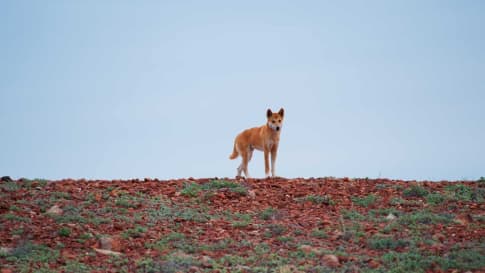
days
Apr, May, Jul, Aug, Oct +2Small group tour of Australia's Flinders ranges
Visiting South Australia
Escorted small group tour of the Flinders range in South Australia from Adelaide. Learn about Coober Pedy, Wilpena pound and water system of Lake Eyre as we explore and learn also about the history of the people who explored the Flinders.
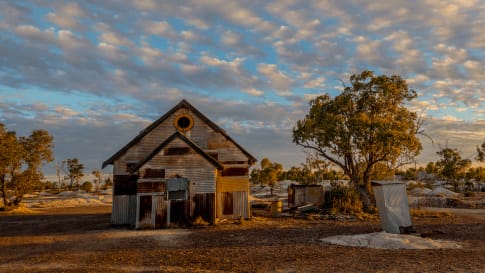
days
Mar, Apr, May, Jul, Aug +2Small group tour of outback Queensland
Visiting New South Wales, Queensland
To Dubbo and back, this small group tour takes you to learn about the Brewarrina fish traps, we travel high up into North Queensland to see the Dinosaurs of Winton and incredible Aboriginal rock art at Cathedral gorge and learn about opal mining and the history of Lightning ridge.

13 days
May, Jun, Jul, Aug, SepSmall group tour of Australia's Kimberley
Visiting Western Australia
Escorted small group tour of the Kimberley. We explore and visit The Bungles, Bell Gorge, Mitchell plateau & Halls Creek in the dry season. Amazing landscapes intertwined with Aboriginal communities resident more than 45,000 years.
From A$15,390 AUD
View Tour
days
Apr, May, Jun, Jul, Aug +3Small group tour exploring Alice Springs and Uluru-Kata Tjuta National Park
Visiting Northern Territory
Explore and learn about historic Alice Springs, The MacDonnell ranges, and Uluru-Kata Tjuta National Park. This escorted small group tour for mature and senior travellers, travelling as a couple or solo travellers also visits the Hermannsburg Lutheran mission plus Henbury meteorite site learning about the Aboriginal outback and contemporary art.

days
Apr, Jun, Aug, Nov, Mar +2Exploring Alice Springs and Uluru-Kata Tjuta National park by Motorbike
Visiting
Explore on a Motorbike tour in the Outback and learn about historic Alice Springs, The MacDonnell ranges, and Uluru-Kata Tjuta national park. This escorted small group Motorbike tour for mature and senior travellers, travelling as a couple or solo travellers also visits the Hermannsburg Lutheran mission plus Henbury meteorite site learning about the Aboriginal outback and contemporary art.
Articles

Aboriginal Art
Senior and mature couples and solo travellers remain curious but often informed about the role Aboriginal art plays in the indigenous community and the various styles. This article seeks to provide a platform for this collection of small group tours of upto 15 people into the Australian outback where often Aboriginal art styles are encountered.
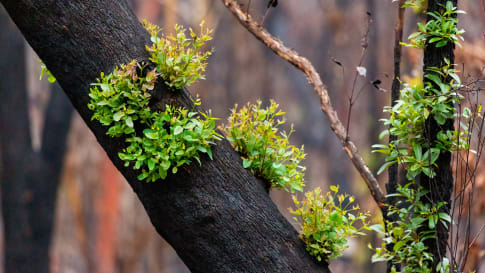
Aboriginal Fire Management
Small group tours for mature and senior travellers in the Australian outback to learn and appreciate land management techniques for couples and solo travellers reflecting Aboriginal culture in Kakadu, Tasmania, Arnhem land and the Kimberley.

Aboriginal history and culture of Kakadu National Park, Northern Territory
For those seek to learn as they travel then the history of the Aboriginal journey and timelines that unfold as a discovery in Australia seek to fascinate the mature and senior traveller on a small group package tour for couples and singles. From Darwin, this tour also visits Arnhem land as well as Kakadu, during the dry season.
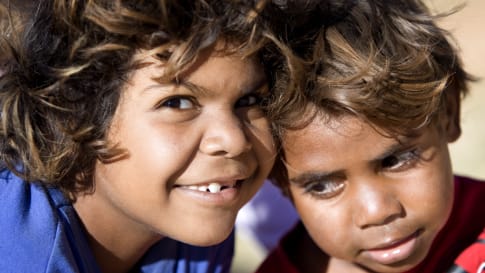
Aboriginal Kinship systems
Article about Aboriginal kinship to assist small group tours in Australia understanding Ancient aboriginal society and the contemporary view. Kinship influences the relationships including aboriginal trading routes.

Aboriginal land use in the Mallee
Learning about the Mallee for a escorted small group tour of South Australia and Western Australia for mature and senior travellers. Understand the Mallee & Wildflowers relationship and the indigenous community land use.
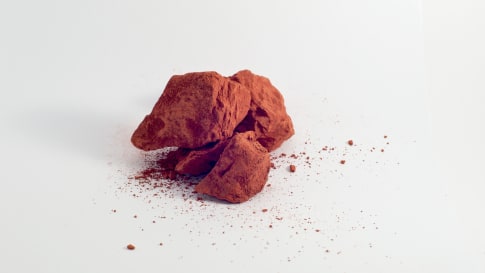
Aboriginal Ochre Trade
Article for small group travellers to learn about ochre in the historic Aboriginal community of outback Australia. Mature and senior travellers explore the deep history and trading routes of Aboriginal History.

Albany Fish Traps, Western Australia
Articles supporting small group tours for senior and mature travellers, couples and solo travelers learning about Aboriginal and colonial history. A large body of archaeological sites specifically associated with Aboriginal estuarine fishing and fishtraps lie scattered across the southwest of Western Australia.

Ancient Aboriginal trade routes of Australia
Ancient Aboriginal trade routes of Australia Trade was a central part of life for Aboriginal people prior to the British settlement of Australia. Trading routes criss-crossed the nation, dispersing goods, information, technologies and culture thousands…

Bora Rings: Ancient Aboriginal Ceremonial Grounds
Article for mature and senior travellers, couple or solo joining an Aboriginal history small group tour of Australia. Small groups of like minded people exploring outback Australia, colonial history and Landscapes.
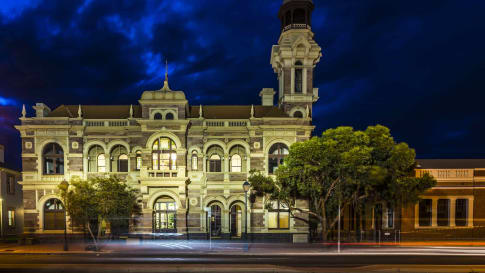
Broken Hill, New South Wales
Broken Hill, is the start and finish of a 4k km exploration of the Deserts of the outback, the history, the aboriginal communities who manage them today. Broken hill small group tour for seniors is an iconic place to commence for active couples or solo travellers seeking to learn and explore.

Contemporary Aboriginal Paintings
Article introducing contemporary aboriginal art to mature and senior travellers taken a escorted small group tour into Outback Australia's Northern Territory, Kimberley, Queensland, New South Wales or South Australia seeking to learn about Aboriginal history and culture.
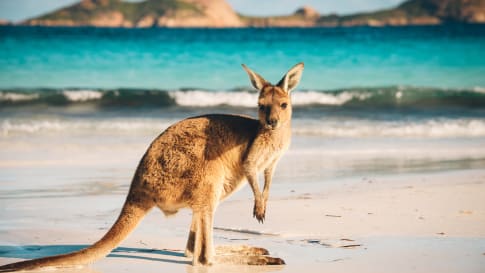
Iconic Animals of the Australian Outback
Explore the wildlife and natural heritage of Australia, with its iconic marsupials, birds, reptiles, and surreal monotremes in the Outback. Odyssey offers small group tours for mature and senior travellers, couples, and solo travelers to Australia.
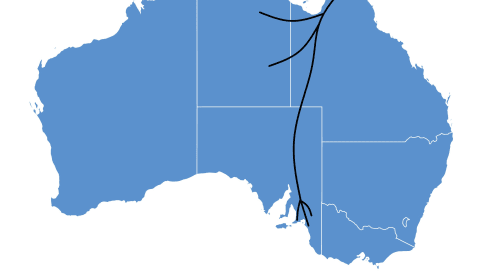
Key Aboriginal Trade Routes of Ancient Australia
Learn about the ancient trading routes that pre-dates the Silk road in this article to support small group tours for mature and senior travellers, couples and solo travellers. The routes developed technology and goods trading across the continent.
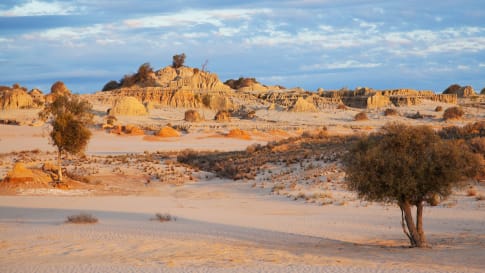
Mungo Man and Mungo Lady, New South Wales
Part of a small group tour of World heritage sites on Victoria, NSW & South Australia for mature and senior travellers. Learn and explore in the Mungo National park about Aboriginal settlement and the fauna and flora of this National park.
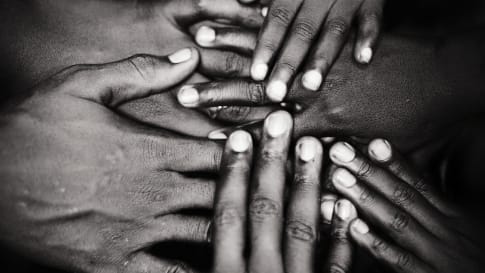
Ngangkari: Traditional Aboriginal Healers of Central Australia
Article about Aboriginal healers of central Australia. Article for seniors for a small group tour couples or solo travellers exploring outback Northern Territory. This is a series of articles on aboriginal communities, kinship, songlines and trade routes.
Questions about Australia for senior travellers
Questions About Australia for senior travellers Odyssey Traveller specialises in crafting unforgettable experiences for senior and mature-aged travellers interested in learning as a couple or as a solo traveller when they travel. Providing adventure and…

The Arrival of Aboriginal Australians on the Continent
Tracing Aboriginal history via an outback small group tour for mature and senior couples or solo travellers provides an intriguing learning platform about Australia, rock art, trading and culture that traces a history possibly some 120,000 years ago.

The Australian Outback: A Definitive Guide
Explore learn and consider what is the outback in this article. For mature and senior travelers considering joining a small group package tours into the outback to see, learn and explore about this unique place, not only the landscape but the Aboriginal approach to living. On each of the tours for couples and the single traveler you learn something different but fascinating, from Outback Queensland, the Flinders, Broken Hill and the Kimberley and the wildflowers all contribute to this question, what is the outback?

The Origins of Australian Stock Routes in Indigenous Traditional Pathways
Article for senior and mature couples and single travellers taking a small group tour. Aboriginal trading routes particular to specific goods such as Pituri have shaped via songlines the highway network of Outback Australia.
